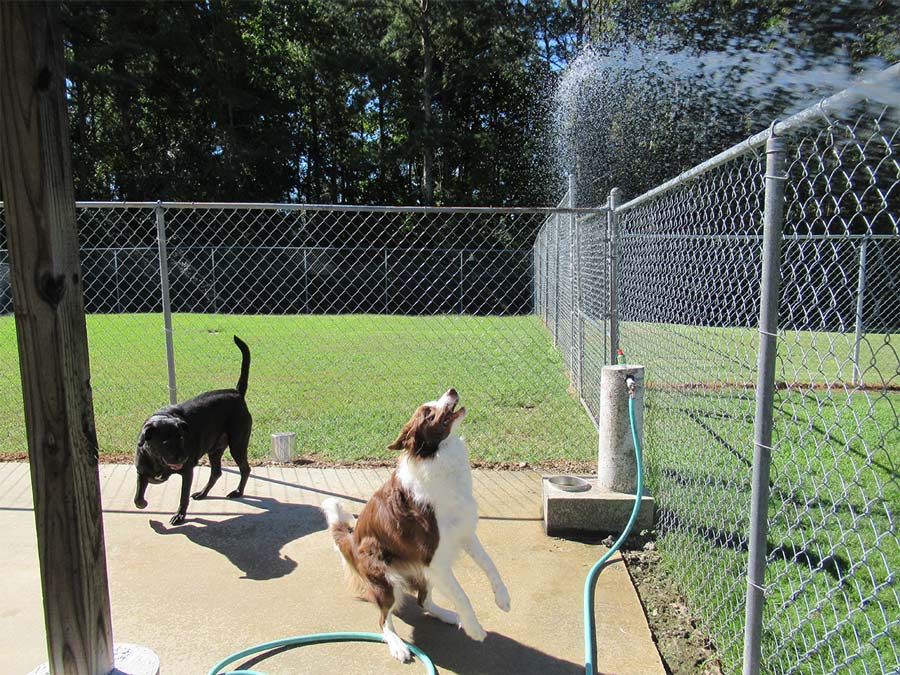The heat of Georgia summers can be brutal. It’s important to understand the seriousness and be aware of how that heat can affect your furry friends. Cardiac arrest and heat stroke are some of the more serious effects of heat exhaustion in dogs. We would like to offer a few hints to help you detect whether your pet is overheating and how to prevent it to keep your dog safe and cool during the summer.
Remember dogs do not sweat out excess body heat the way humans do. Instead, they pant. But sometimes panting is not enough to keep your dog from overheating. Heat exhaustion in dogs occurs when their body temperature becomes higher than their normal temperature. If your pet’s internal temperature rises to reach 106 degrees or higher, your pup is in the danger zone for heat stroke, during which the organs begin to shut down and his heart could stop altogether.
SIGNS OF HEAT STROKE:
- Excessive Panting
- Glazed Eyes
- Excessive Drooling
- Dizziness or Lack of Coordination
- Convulsions
- Lack of Consciousness
- Vomiting or Diarrhea
- Blue or bright red colored tongue or gums
WHAT TO DO IF YOUR DOG IS OVERHEATING
- Move your pet to a cooler location immediately
- Check his temperature – heat exhaustion in dogs normally occurs between 103 and 106 degrees while heat stroke can occur in temperatures above 106. Call a veterinarian immediately if your dog is in the danger zone.
- Use cool, wet washcloths to to cool your dog down or if possible, move him into a cool body of water
- If he’s able to drink, give your pet water. Do NOT force water down their throat if they cannot drink – this can lead to your pet choking
- Get your pet to a veterinarian




